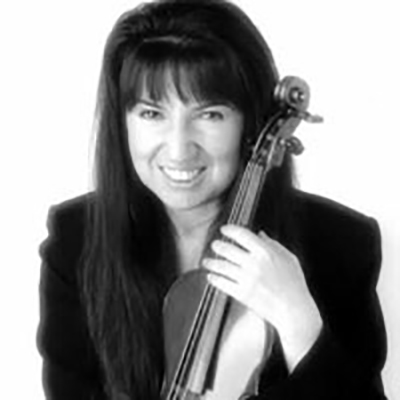Hoffer concerto premiere highlights New England Philharmonic program

There is nothing complacent about the New England Philharmonic’s programming.
Sunday afternoon’s bracing matinee at Jordan Hall proved so again with a program titled “Together & Apart.” The concert offered the world premiere of a new concerto by Bernard Hoffer alongside music by John Adams and Judith Weir, plus an astonishingly belated Béla Bartók premiere.
With NEP music director Richard Pittman indisposed due to illness, the orchestra’s assistant conductor Eric Culver took the reins. In the event, he acquitted himself well, particularly in the afternoon’s biggest piece, Hoffer’s Violin Concerto No. 2.
With a duration of about forty minutes, Hoffer’s work is a substantial entry in the genre. Cast in ten movements and subtitled “Decapod,” the score alludes to a variety of musical genres, with episodes of swirling, chromatic filigree giving way to searching, meditative lyricism and even evocations of a jazz combo.
Written for NEP concertmaster Danielle Maddon, the concerto is, ultimately, a smart, virtuosic showpiece that remains, expressively, somewhat ambiguous: for all its moments of whimsy and humor, when the music turns dark, it doesn’t provide any easy answers. Indeed, the concerto’s final gesture (for solo violin and percussion alone) is aggressive – and prefaced by an ominously repeated riff.
Maddon’s account of the solo part on Sunday was full-bodied and lively. She executed Hoffer’s complex writing in the opening movement with aplomb while also teasing out the third’s soulful hints and sketching a delicate portrait in artificial harmonics in the sixth (“Contrasts”). The Scherzo featured a buoyant delineation between pizzicato and arco textures, while a warmly introspective conversation between Maddon, a solo horn, and orchestral strings unfolded in the “Elegy.”
Throughout, Culver and the NEP were Maddon’s full partners, the orchestra subtly underlining the inventive strokes in Hoffer’s writing, like the pair of double basses accompanying the soloist in “Contrasts” and the repetition of a single pitch passed through the ensemble in “Recap.”
To be sure, Hoffer’s writing is full of ear-catching turns and a fine sense of timbral combinations. Even if the concerto ulktimately feels a mite discursive and relies too much on ABA formal schemes, the piece doesn’t lack for good ideas, coloristic flair, and a striking sense of drama.
Similar qualities mark Judith Weir’s Moon and Star. A 1995 setting of Emily Dickinson’s “Ah, Moon, and Star!,” Weir’s score evokes the immensity of the heavens with a combination of broadly-spaced sonorities, floating melodic lines, and substantial writing for high instruments (including a battery of bell-like mallet percussion). The orchestral part is often involved, marked by bubbling, rising figures over the work’s first part and culminating in a spry dance just before the sudden fade-out.
On Sunday, the NEP was joined by the Metropolitan Chorale, which sang with warmth and agility. At times, balances between the two groups were slightly off and diction indistinct, but the broad strokes of Weir’s writing came through, especially her beguiling sense of phrasing and ear for iridescent orchestral sonorities.
The Bartók debut with which the afternoon closed was of his 1904 tone poem Kossuth. Based on the life and death of the eponymous 19th-century Hungarian freedom fighter, the piece caused a sensation at its premiere in Budapest. Today one might legitimately wonder why, given the music’s obvious debts to Richard Strauss, Wagner, Grieg, and even Beethoven.
Still, the piece does possess a certain swagger and Kossuth’s theme is noble and alluring. The battle music features a riotous distortion of the Austrian national anthem. On top of that, the huge orchestra (including eight horns) builds to quite a din.
On Sunday, Culver led the NEP in a directed, purposeful rendition of the piece. True, it was a bit ragged in execution and didn’t always hide the music’s seams. But this Kossuth was often texturally lean (the harp writing cut through impressively) and the big moments all came over vigorously.
To start off the afternoon, the NEP delivered a taut, pulsing account of John Adams’ The Chairman Dances. Here too, some mid-work textures proved hazy, but the outer thirds snapped and the climactic duet between trumpets and horns soared.
The next concert of the New England Philharmonic features music by Stravinsky, Helen Grime, Eric Nathan, and Mahler 8 p.m. April 25 at Tsai Performance Center. nephilharmonic.org
Posted in Performances